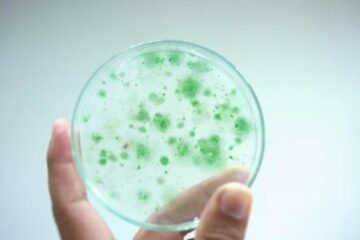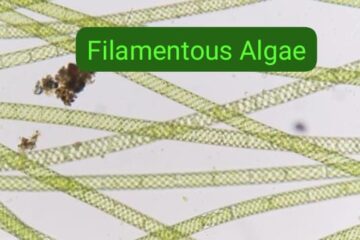Laminaria japonica, also known as Japanese kelp or Kombu, is a species of brown seaweed native to the coastal regions of Japan, China, and Korea. It is one of the most economically and culturally important seaweeds in East Asia, and its utilization extends beyond its natural habitat.

Appearance and Habitat:
In the vast coastal regions of East Asia, a majestic seaweed known as Laminaria japonica, or Japanese kelp, commands attention with its striking appearance and crucial ecological role. With its distinctive features and remarkable habitat preferences, it’s stands as a testament to the beauty and diversity of marine life
Striking Appearance:
Laminaria japonica boasts an eye-catching appearance that distinguishes it from other seaweed species. It is a large brown seaweed with elongated strap-like blades that can reach lengths of up to 4 meters (13 feet). The blades exhibit a rich, dark brown color, occasionally accompanied by subtle greenish hues. These blades are broad and flat, showcasing a smooth or slightly wrinkled texture.
Attached to the substrate by a holdfast, Laminaria japonica’s blades rise gracefully from the depths, creating a visually stunning underwater forest. The seaweed’s elegant and elongated form adds a sense of grandeur to coastal environments, captivating the attention of both scientists and nature enthusiasts alike.
Habitat Preferences:
Laminaria japonica has specific habitat preferences, primarily found in the cold and temperate coastal regions of Japan, China, and Korea. It thrives in the subtidal and intertidal zones, where it anchors itself to rocky substrates or other solid surfaces using its robust holdfast. The seaweed’s preferred habitat is characterized by cool waters, moderate wave action, and access to ample sunlight.
The intertidal zone, where it can be found during low tide, offers a dynamic environment with exposure to both air and water. This unique habitat presents challenges such as desiccation and fluctuating temperatures, to which Laminaria japonica has adapted with remarkable resilience.
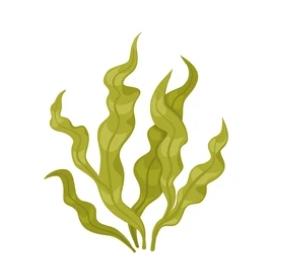
Ecological Significance:
It plays a vital ecological role in coastal ecosystems. Its towering presence creates dense underwater forests known as kelp forests. These forests provide a diverse array of habitats, acting as nurseries and shelters for countless marine organisms. It offers protection and a source of food for various fish, invertebrates, and other algae. Additionally, the underwater forests contribute to coastal stability by mitigating wave energy and preventing erosion.
laminaria uses:
Culinary and Nutritional Uses of lamineria
It has a long history of culinary use in East Asia, particularly in Japanese, Chinese, and Korean cuisines. It is commonly used to make dashi, a traditional Japanese soup stock, by simmering the dried kelp with other ingredients like bonito flakes. Laminaria japonica is also used in the preparation of various side dishes, salads, sushi rolls, and stews.
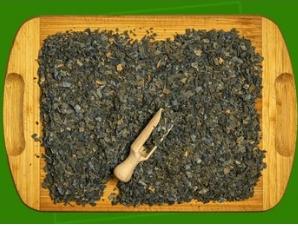
Culinary Versatility:
It holds a revered place in Japanese, Chinese, and Korean cuisines, where it is used in a multitude of culinary creations. Its distinct umami taste, often described as savory and slightly sweet, adds depth and complexity to dishes. Here are some popular culinary applications:
Dashi: It is a key component in dashi, a fundamental Japanese soup stock. The dried kelp is simmered with bonito flakes to create a rich and flavorful base for miso soup, noodle broths, and various other Japanese dishes.
Side Dishes and Salads: Sliced or shredded of it is often used in side dishes and salads. It can be marinated, pickled, stir-fried, or simply blanched and seasoned with soy sauce and sesame oil.
Sushi and Rolls: it is frequently incorporated into sushi rolls, known as norimaki, providing a textural contrast and enhancing the overall flavor of the dish.
Stews and Soups: The seaweed’s hearty texture and umami flavor make it an excellent addition to stews, hot pots, and hearty soups, infusing them with a delightful taste and enhancing their nutritional value.
Nutritional Powerhouse:
In addition to its culinary merits, Laminaria japonica boasts an impressive nutritional profile, offering an array of health benefits. Here are some notable nutritional components:
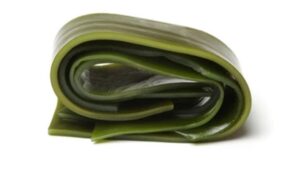
Iodine: it is a rich source of iodine, a vital mineral necessary for proper thyroid function and the production of thyroid hormones. Adequate iodine intake is essential for maintaining a healthy metabolism.
Dietary Fiber: The seaweed contains significant amounts of dietary fiber, which aids digestion, promotes satiety, and helps regulate blood sugar levels.
Minerals: it is a good source of essential minerals such as calcium, magnesium, iron, and potassium, contributing to bone health, muscle function, and overall well-being.
Vitamins: This seaweed is a natural source of vitamins, including vitamin K, vitamin C, and various B vitamins. These vitamins play crucial roles in blood clotting, immune function, and energy metabolism.
Medicinal Properties and Health Benefits:
It has been used in traditional medicine for centuries and is believed to possess various health benefits. It is recognized for its potential anti-inflammatory, antioxidant, anticoagulant, and immune-stimulating properties. Extracts from Laminaria japonica have been investigated for their potential therapeutic applications, including in the fields of cardiovascular health, cancer prevention, weight management, and digestive health.

Anti-Inflammatory and Antioxidant Effects:
It contains a variety of bioactive compounds that exhibit potent anti-inflammatory and antioxidant properties. These properties have been attributed to the presence of compounds such as fucoxanthin, fucoidan, and phlorotannins. By reducing inflammation and neutralizing harmful free radicals, Laminaria japonica may help protect cells from oxidative damage and support overall health.
Digestive Health:
It has long been used to support digestive health. Its dietary fiber content promotes regular bowel movements, prevents constipation, and aids in maintaining a healthy digestive system. The seaweed’s natural prebiotic properties also contribute to a healthy gut microbiota, fostering the growth of beneficial bacteria and supporting optimal digestion and nutrient absorption.
Weight Management:
In recent years, it has gained attention for its potential role in weight management. The seaweed is low in calories and high in dietary fiber, providing a sense of satiety and helping to curb appetite. Additionally, some studies suggest that certain compounds in Laminaria japonica may have a modulating effect on lipid metabolism, potentially aiding in weight loss efforts.
Cardiovascular Health:
It shows promise in promoting cardiovascular health. Some research indicates that the seaweed may help lower blood pressure and reduce cholesterol levels, including the “bad” LDL cholesterol. These effects can potentially reduce the risk of cardiovascular diseases such as hypertension and atherosclerosis.
Thyroid Function:
It is renowned for its high iodine content, which is essential for proper thyroid function. Adequate iodine intake supports the production of thyroid hormones, which regulate metabolism, growth, and development. However, it is important to consume Laminaria japonica in moderation, as excessive iodine intake can have adverse effects on thyroid function.
Skin Health:
The bioactive compounds found in it have shown potential benefits for skin health. The seaweed’s antioxidant and anti-inflammatory properties may help protect the skin from damage caused by environmental factors and oxidative stress. Additionally, Laminaria japonica extracts have been studied for their potential to improve wound healing and reduce skin inflammation.
Immune Function:
It contains polysaccharides, such as fucoidan, which have been found to exhibit immune-stimulating properties. These compounds may enhance the activity of immune cells, promote immune system balance, and support overall immune function. While more research is needed, these properties suggest that Laminaria japonica could play a role in supporting a healthy immune system.
Industrial Applications:
Beyond its culinary and medicinal uses, It has a range of industrial applications. The seaweed is a valuable source of alginate, a natural polysaccharide widely used in the food, pharmaceutical, and cosmetic industries. Alginate is used as a thickening agent, emulsifier, and stabilizer in various products, including ice cream, sauces, dressings, and beauty products.
Alginate Production:
One of the primary industrial applications of It is the extraction of alginate, a natural polysaccharide found in the seaweed’s cell walls. Alginate is widely used as a gelling, thickening, and stabilizing agent in industries such as food, pharmaceuticals, cosmetics, and biotechnology. It imparts desired texture and stability to products ranging from ice cream and dairy products to wound dressings and drug delivery systems.
Food and Beverage Industry:
It has a significant presence in the food and beverage industry beyond its culinary uses. It serves as a natural source of flavor enhancers, such as glutamic acid and nucleotides, which contribute to the umami taste and savory notes in various food products. Additionally, the seaweed’s high mineral content makes it a valuable ingredient for fortifying food products, including snacks, soups, and health supplements.
Agriculture and Horticulture:
Laminaria japonica and its extracts are utilized in agricultural practices to enhance crop growth and increase tolerance to environmental stress. The seaweed’s bioactive compounds and nutrients stimulate plant growth, improve soil fertility, and enhance resistance to pests and diseases. Laminaria japonica-based fertilizers and biostimulants are used to promote healthy plant development, increase crop yields, and improve overall agricultural sustainability.
Bioplastics and Biodegradable Materials:
The eco-friendly nature of Laminaria japonica makes it an attractive resource for the development of bioplastics and biodegradable materials. Researchers are exploring the use of alginate derived from Laminaria japonica as a biopolymer for the production of films, packaging materials, and disposable items. These biodegradable alternatives offer a sustainable solution to the plastic waste problem and contribute to a greener future.
Environmental Applications:
It plays a crucial role in environmental remediation and pollution control. The seaweed has the ability to absorb heavy metals and other contaminants from water, making it a valuable tool in wastewater treatment and environmental restoration efforts. By acting as a biofilter, Laminaria japonica contributes to the purification of water bodies and helps maintain ecological balance in polluted areas.
Cosmetics and Personal Care Products:
The unique properties of Laminaria japonica make it a sought-after ingredient in the cosmetic and personal care industry. The seaweed’s extracts are utilized in skincare formulations for their moisturizing, anti-aging, and skin-protective properties. Laminaria japonica-based products, such as face masks, creams, and serums, are known to provide hydration, improve skin elasticity, and promote a healthy complexion.
Conclusion:
Laminaria japonica, or Japanese kelp, is a versatile and culturally significant seaweed in East Asia. With its culinary uses, nutritional benefits, potential medicinal properties, and industrial applications, this brown seaweed plays a vital role in various aspects of human life. Whether enjoyed as a delicious ingredient or explored for its potential health benefits, Laminaria japonica continues to captivate people’s attention and contribute to the rich tapestry of culinary and scientific exploration.
Q/A
1. Q: What is Laminaria japonica?
A: Laminaria japonica is a species of brown algae, also known as Japanese kelp or kombu. It is a large, edible seaweed found in the cold waters of the Pacific Ocean, particularly around Japan, China, and Korea.
2. Q: What are some common uses of Laminaria japonica in culinary practices?
A: Laminaria japonica is widely used in Asian cuisine, especially in Japanese, Chinese, and Korean dishes. It is commonly used to make dashi, a traditional soup stock in Japan. It is also used as an ingredient in various dishes, including salads, sushi rolls, and stews.
3. Q: How is Laminaria japonica cultivated and harvested?
A: Laminaria japonica is typically cultivated on underwater ropes or nets in seaweed farms. The seaweed grows attached to these structures in the ocean. Harvesting is done manually by cutting the mature blades close to the base, allowing new growth to continue.
4. Q: What are the nutritional benefits of Laminaria japonica?
A: Laminaria japonica is a nutrient-dense seaweed that is rich in essential minerals such as iodine, potassium, calcium, and iron. It also contains vitamins, dietary fiber, and other beneficial compounds. It is particularly valued for its high iodine content, which is essential for thyroid function.
5. Q: What are the ecological benefits of Laminaria japonica in marine ecosystems?
A: Laminaria japonica plays a vital ecological role in marine ecosystems. It provides habitat and food sources for various marine organisms, serving as a nursery ground for young fish and invertebrates. Additionally, kelp forests, including those formed by Laminaria japonica, contribute to coastal protection by reducing wave energy and preventing erosion.
6. Q: Are there any potential environmental concerns related to the cultivation of Laminaria japonica?
A: While Laminaria japonica cultivation can have ecological benefits, it can also lead to environmental concerns if not managed properly. Poorly managed seaweed farms may cause habitat alteration, water quality issues, or interference with natural ecosystems. Sustainable practices are essential to ensure the long-term viability of kelp cultivation.
7. Q: How is Laminaria japonica processed for commercial use?
A: After harvesting, Laminaria japonica is typically washed, dried, and processed into various forms. It can be sold as dried whole blades, powdered, or processed into other seaweed products, such as flakes or extracts, for use in the food industry and traditional medicine.


